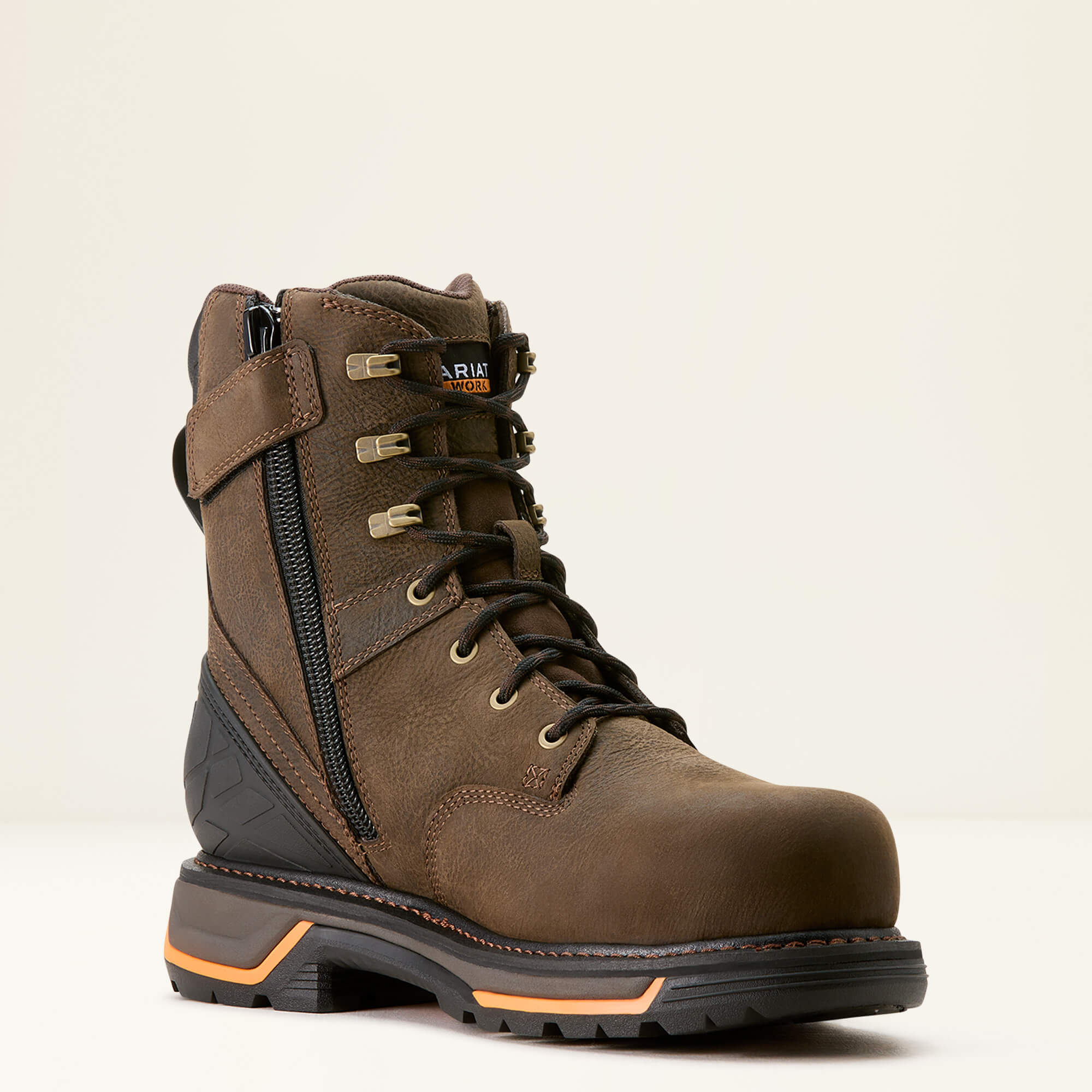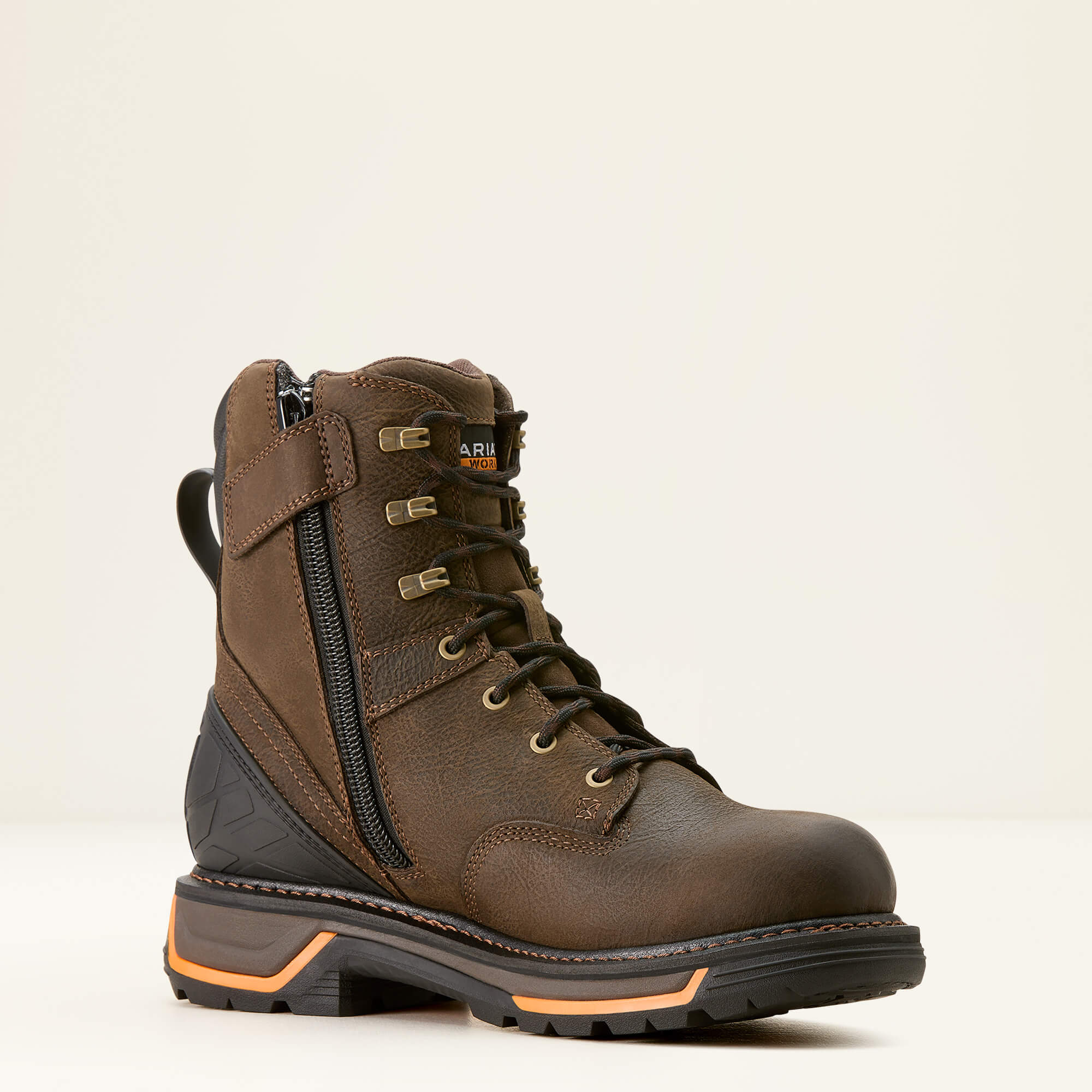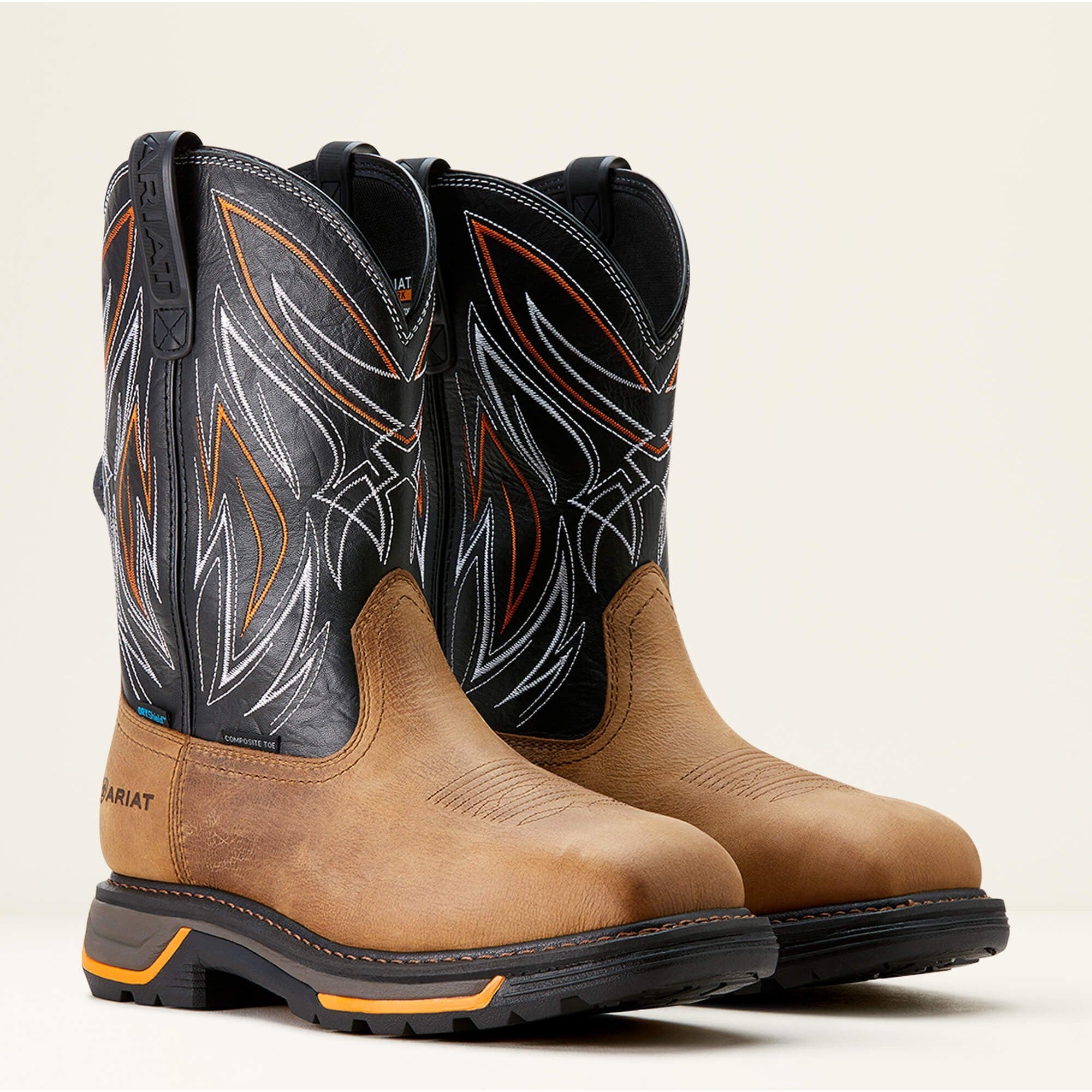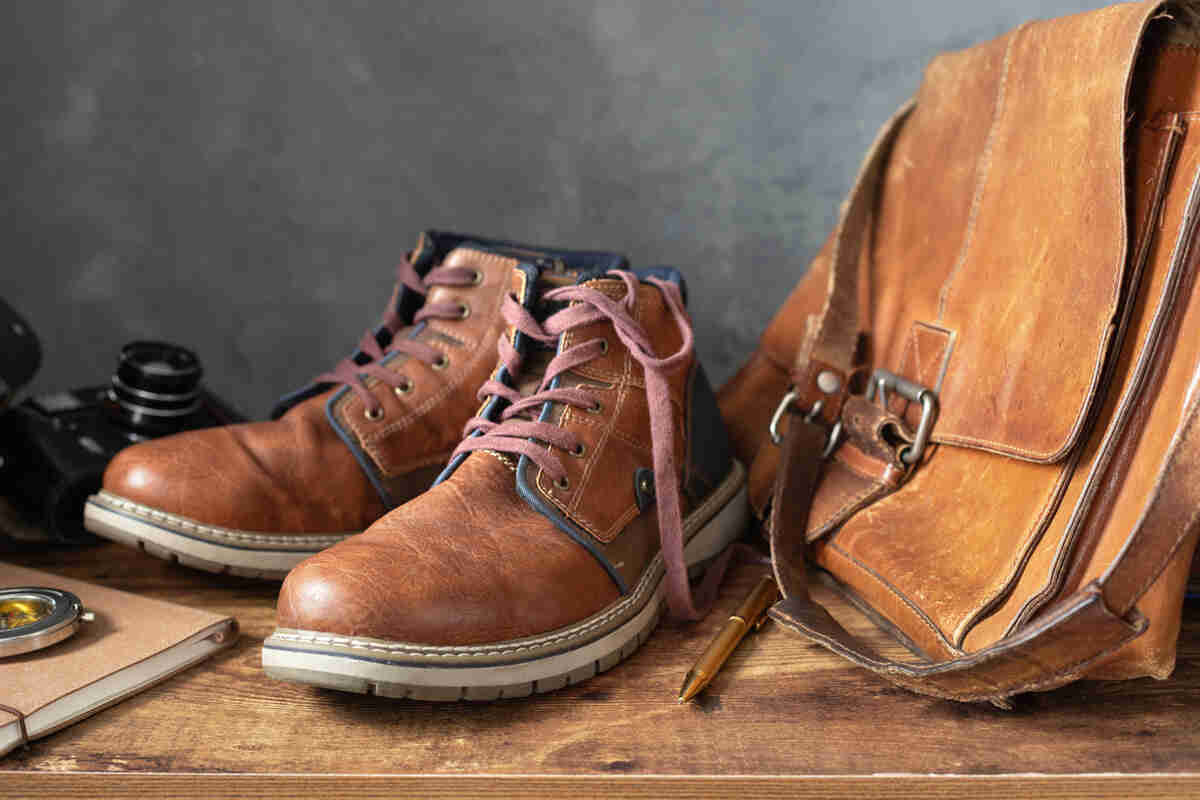Ah, leather – the epitome of style and sophistication. A material that exudes class and durability. But even the toughest of hides can succumb to the ravages of time and neglect. From scuffs and scratches to unsightly cracks, leather damage can quickly diminish the allure of your leather work boots, furniture, and other prized possessions.
But fear not, for in this blog post, we will unveil the most common culprits behind leather damage and provide you with the fixes you need to restore leather items to their former glory. Without further ado, let's dive right into leather restoration!
Types of Damage & Durability: Natural Leather vs. Faux Leather
When it comes to leather materials, there are two primary contenders: natural leather and faux leather. While both may appear similar at first glance, they have distinct characteristics, especially regarding damage. Natural leather, derived from animal hides, is a product of nature itself. It boasts a unique texture, rich aroma, and unparalleled durability.
Due to its organic composition, high-quality leather possesses inherent strength and resilience. It can withstand wear and tear, developing a charming patina over time that adds to its character. However, it is not impervious to leather damage. It can be susceptible to different leather damage types, such as fading, drying out, and cracking, if not properly cared for.
On the other hand, faux leather, also known as synthetic or artificial leather, is a man-made substitute. It is crafted using various materials like polyurethane (PU) or polyvinyl chloride (PVC) to mimic the look and feel of genuine leather. Faux leather offers an affordable alternative to natural leather and often boasts greater resistance to moisture and staining. However, regarding long-term durability, faux leather tends to be less resilient than its natural counterpart.
[prc-collections-carousel]

A Battle of Durability: Which Type of Leather Reigns Supreme in Resisting Damage?
One significant difference between the two lies in how they respond to leather damage. Natural leather, with its organic composition, has the potential to age gracefully, developing a desirable worn-in appearance. It may show signs of wear, such as minor scratches or creases, but these imperfections are often considered part of its charm. With proper care and maintenance, natural leather can be rejuvenated and repaired to a great extent.
On the other hand, faux leather has a more limited capacity to recover from damage. While it may resist certain types of wear, such as fading or staining, faux leather is prone to peeling, cracking, and deteriorating over time. Once damage occurs, it is often challenging to restore leather to its original state. While products are available to mitigate minor issues, the overall longevity of faux leather may be compromised.
To sum it up, natural leather possesses inherent strength and the ability to develop a desirable patina over time, while faux leather may resist certain leather damage types but is more prone to irreversible damage. Ultimately, the choice between the two depends on personal preferences, budget, and the desired longevity of the material.
Fighting Back: Leather Restoration & Damaged Leather Repair
Leather is a durable natural material that ages gracefully with proper care. Nonetheless, it is not immune to everything. However, even if your shoes or furniture face it, don't let leather damage discourage you. Instead, embrace the challenge and restore leather furniture, shoes, or other items to their former glory.
So, facing any leather damage troubles? Fear not! Armed with a dry cloth in hand and a little know-how, you can defy the odds and breathe new life into your cherished leather shoes or furniture. Keep reading to learn how leather restoration works.

1. Direct Sunlight: The Stealthy Fading Fiend
Does sunlight affect leather? How do I protect it from UV damage? Let's answer these worries. The warm embrace of sunlight on a lazy afternoon is delightful, but not for leather.
So, yes, direct sunlight can be a brutal villain, causing the leather dye to fade and leaving your favorite leather work boots or furniture surface looking lackluster. To prevent and counter this sneaky foe, keep your leather items away from direct sunlight when not in use.
How to Fix It
If you've already fallen victim to leather sun damage, the solution to this type of leather damage lies in leather dye. Apply a matching dye with a clean cloth in gentle, circular motions to bring back the vibrant allure of your leather.
2. Dryness: When Leather Yearns for Hydration
Leather, like a thirsty wanderer in the desert, craves moisture. Prolonged exposure to dry environments can cause the leather to lose its natural oils, resulting in cracks and an overall weathered appearance. How do I prevent leather from drying out and becoming stiff? For preventing your leather shoes from looking like Sahara, regular hydration is key!
How to Fix It
To quench its thirst, use a leather cleaner to remove any dirt or debris, and then apply a suitable leather conditioner using a clean cloth. Massage the conditioner into the leather in gentle circular motions, allowing it to absorb and restore the moisture balance. Once dry, wipe any excess conditioner off your shoes with a lint-free cloth, and you're all done. Remember, hydration on a regular basis is the key to supple and rejuvenated leather!
3. Direct Heat: The Scorching Saboteur
Leather may be tough, but it has an Achilles heel: heat. If you’ve wondered: Can heat damage leather? , the answer is a resounding yes. Placing leather items near a direct heat source, such as a radiator or a hair dryer, can cause irreparable damage. Excessive heat can lead to leather cracks and the loss of its natural luster.
How to Fix it
If you work in hot environments and your leather shoes have been exposed to such peril, take immediate action. Gently clean the damaged area with mild soap and warm water using a soft cloth. Allow it to air dry naturally, avoiding the temptation to speed up the process with heat. Once dry, apply a leather conditioner to restore its lost glory. The same goes for any outdoor leather furniture that has been exposed to sunlight or a heat source.
4. Neglected Maintenance: When Cleanliness Takes a Backseat
Despite their durability, leather shoes require regular cleaning to maintain their elegance. What ruins leather? Forgetting to do so! Neglecting this crucial aspect can lead to an accumulation of dirt and grime, resulting in accelerated signs of wear and tear, and ultimately, leather damage. To combat this predicament, develop a routine of regular cleaning.
How to Fix It
If your trusty leather shoes or steel-toe work boots look like they've been to hell and back, start by wiping the leather surface with a dry cloth to remove any loose particles. Then, dampen a clean cloth with a leather cleaner and gently wipe the surface in circular motions. Follow up with a dry cloth to remove any excess moisture. With regular cleaning, you can keep leather damage at bay and preserve its pristine appeal. The same applies if you want to restore leather furniture.
5. Scratches and Deep Cracks: Battle Scars of the Ages
What causes leather to crack, and how can I fix it? Well, time can leave its mark on leather, manifesting as scratches or deep cracks that mar its once smooth surface. It’s usually a result of direct leather damage due to wear and tear or the loss of hydration. But that doesn’t necessarily mean all is lost. Here's how to fight back.
How to Fix it
When faced with such battle scars, you can turn the tide with a leather repair kit. These kits often include a leather filler that can be applied to the cracks, smoothing out the imperfections. Once filled, sand the area lightly to achieve a seamless finish.
Apply a matching pigmented leather dye to blend the repaired section with the rest of the leather. With a little care and the right tools, your leather can triumph over deep cracks, whether restoring a leather couch, chair, or your favorite pair of composite-toe leather boots.
6. The Slick Saga of Stains
Oil and water stains can be a nightmare for leather enthusiasts, leaving unsightly marks on their beloved shoes or leather furniture. Whether it's a splatter of salad dressing, moisture exposure, or work in wet and oily environments, stains can quickly take hold. But fear not because we're here to shed light on the sneaky ways of oil or water damage to leather products.
How to Fix it
Wondering: "How do I remove stains from leather?" When dealing with oil stains, act swiftly by blotting the area gently with an absorbent material like a clean cloth or paper towel. Avoid rubbing the stain, as it may spread further. Once most of the oil is absorbed, sprinkle a small amount of talcum powder or cornstarch on the stain and let it sit overnight. The powder will help draw out the remaining oil
The next day, carefully brush off the powder and wipe the area clean with a damp cloth. Voila! The oil stain will be significantly diminished if not completely gone. For water stains, prevention is key. Shield your leather items from exposure to excessive moisture, and if a spill occurs, act promptly by gently dabbing the area with a clean, dry cloth to absorb as much moisture as possible.
Avoid direct heat sources like hair dryers, as they can cause more harm than good. Instead, allow the leather to air dry naturally in a well-ventilated area. If the water stain persists, try a specialized leather cleaner or mild soap mixed with warm water. Apply the cleaner or soap solution with a clean cloth, using gentle circular motions. Rinse the cloth and repeat until the stain fades. Remember to blot the area dry and let it air dry completely.

The Last Resort for Leather in Distress
[prc-collections-carousel]
You should be able to take care of the most common types of leather damage with these tips and tricks. After all, leather is not just a material; it's an embodiment of elegance, a testament to craftsmanship, and a companion for a lifetime. Treat it right, and it will reward you with unmatched sophistication and a touch of luxury that only leather can provide.
However, sometimes, leather damage can be a stubborn foe, refusing to yield to your heroic efforts. If the damage is too extensive and none of these solutions seem to work, you can always take your leather boots to a leather repair expert as a final recourse. These skilled artisans have the know-how and magic touch to breathe new life into even the most battered leather boots.
And if all else fails and your leather goods are beyond repair, guess what? It's the perfect excuse to treat yourself to a shiny new pair of premium men's or women's leather boots!

From Battle Scars to Timeless Beauty: The Resilience of Well-Cared-for Leather
Leather, a timeless and durable material, deserves proper care and attention to ensure its longevity. By avoiding direct sunlight, maintaining moisture levels, steering clear of direct heat, practicing regular cleaning, and utilizing leather repair techniques for deep cracks, you can safeguard your shoes and furniture from leather damage and extend their lifespan
So, go ahead – try out these leather restoration tips, and let them tell their timeless tale for years to come. Take care of your leather work boots, and they will take care of you. And if it's time for a fresh start and a brand-new pair, we've got your back. Check out our jaw-dropping collections of premium men's and women's leather work boots and shoes.
From sleek and stylish to rugged and dependable, we've got the perfect pair to suit your every need and every industry. Wave goodbye to your worn-out leather woes and step into a world of luxury, durability, and style!






